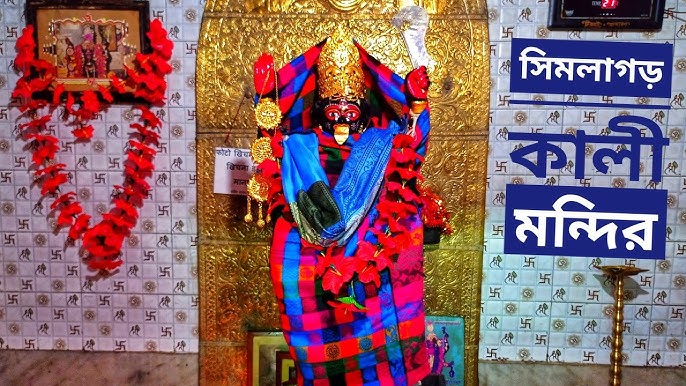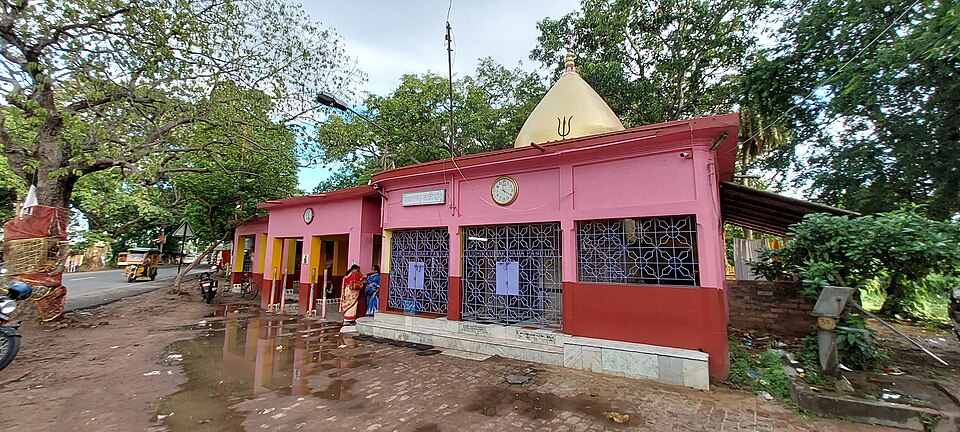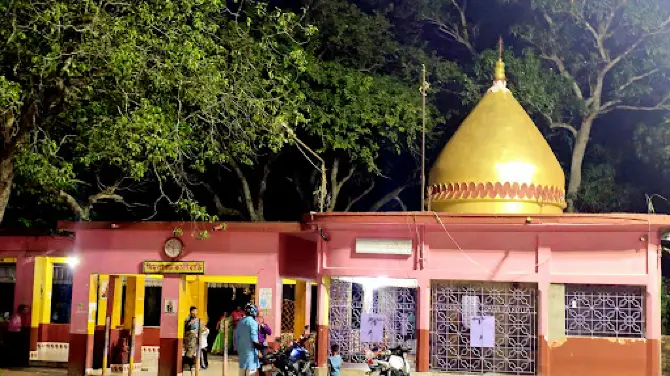The Simlagarh Kali Mandir, a temple dedicated to the goddess Kali is located on the Grand Trunk Road in Simlagarh, which is near Pandua in the Hooghly district of West Bengal. There are various stories surrounding Dakshinakali of Simlagarh in Pandua, which is about 500 years old. Goddess Kali’s Dakshinakali form is worshipped in this temple.
In the words of the temple priest Anamik Chattopadhyay, “Many people do not know exactly how many years ago Goddess Kali’s puja started here.”
Simlagarh Kali Mandir is situated in Pandua region, which has a long history as the capital of the Bengal Sultanate in the 14th and 15th centuries. Unlike the ancient monuments in the area, the Kali temple is a functioning place of worship that serves the local community.
Simlagarh Kali Mandir is known for its serene and spiritual ambiance. Intricate carvings, ornate spires, and frescoes depicting scenes from Hindu mythology are part of the temple’s unique architecture. Visitors have noted the powerful presence of the deity, which adds to the temple’s spiritual atmosphere. The temple is open to visitors throughout the week.
Tantric used to worship Goddess Kali here
At one time, the entire area was completely surrounded by crematoriums and forests. There was no human settlement. The forest was so deep that people were afraid to go to those places. According to folklore, a Kapalik lived on the bank of a pond next to that forested area. Sitting on the seat of Panchamundi, that Kapalik used to worship Goddess Kali.

Human sacrifice was practiced before Maa Kali
Local history says that when robbers went on a mission to loot, they used to go to that dense forest and worship this Goddess. It is said that the robbers used to offer human sacrifices in front of Goddess Kali. Although later, human sacrifice was discontinued due to pressure from the Tantrics. It is also said that even famous Raghu Dakat (dacoit) of Bengal used to worship this Goddess Kali.
According to locals, one day, Tantric Natobar Bhattacharya went to worship Maa Kali and saw that human heads were scattered in front of the temple. Seeing this, the Tantric got scared. He left without worshipping. Four days after this incident, the Goddess appeared in his dream and said, “I am fasting, I have not been worshipped.” The Goddess instructed the Tantric to ensure that human sacrifice is stopped here. Since then, human sacrifice has been stopped. Although now the custom of goat sacrifice is in practice.
Gradually, the importance of Dakshinakali of Simlagarh Kali Mandir started increasing. At that time, the name of the area was Hariharpur. The importance of the road in the area adjacent to this temple continued to increase. Locals say that during World War II, the importance of GT Road started increasing for the movement of the army.
Goddess Kali offered fish and sweets
However, many things have changed with time. Simlagarh Kali Mandir has been built gradually. The greatness of Dakshinakali has spread far and wide. Devotees throng the temple every day. A settlement has developed around the temple. Shops have been set up. Car and truck drivers passing through GT Road offer pooja in this Kali temple. Goddess Kali’s “Bhog” or offering comprises shondesh (chhena sweets) and fish.



